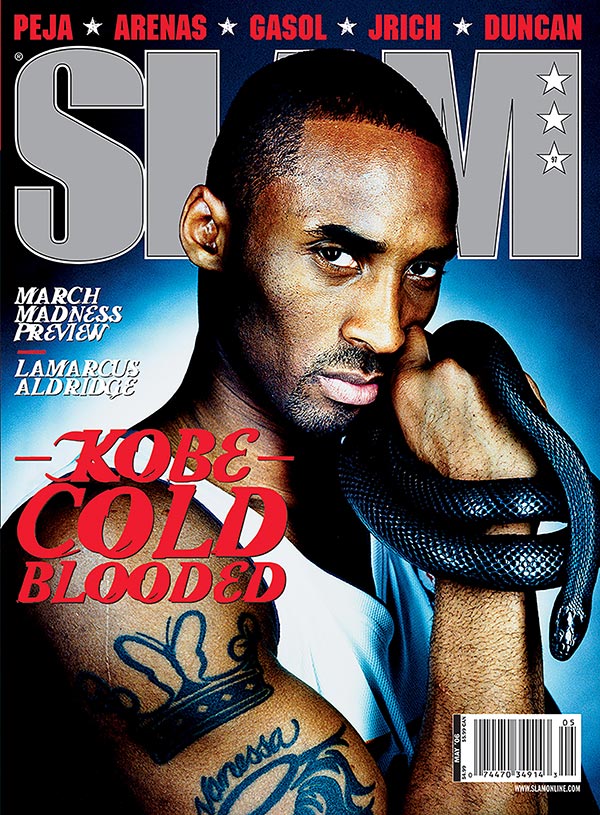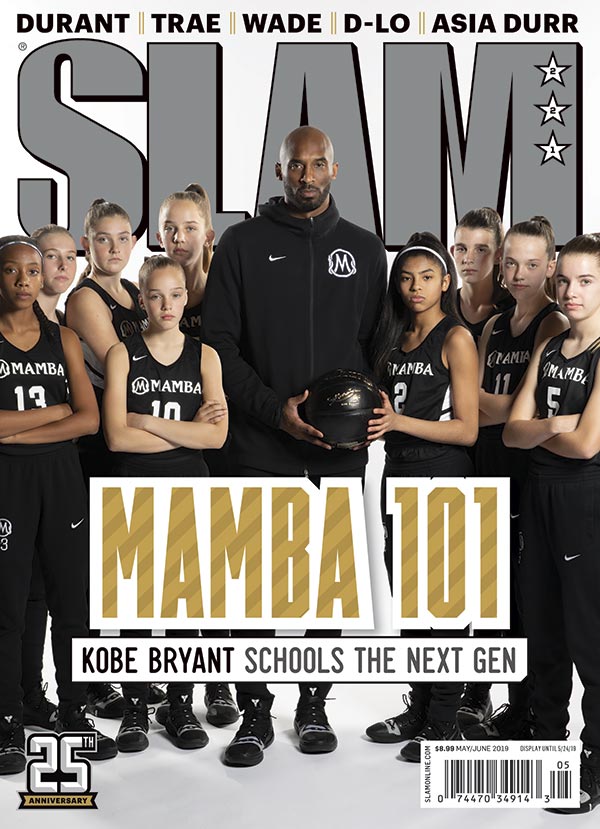For three decades we’ve covered many amazing basketball characters, but some stand above the rest—not only because of their on-court skills (though those are always relevant), but because of how they influenced and continue to influence basketball culture, and thus influenced SLAM. Meanwhile, SLAM has also changed those players’ lives in various ways, as we’ve documented their careers with classic covers, legendary photos, amazing stories, compelling videos and more.
We compiled a group of individuals (programming note: 30 entries, not 30 people total) who mean something special to SLAM and to our audience. Read the full list here and order your copy of SLAM 248, where this list was originally published, here.
Michael Redd was a 2004 NBA All-Star, a member of the 2008 USA Olympic basketball team…and, during the summer of ’08, a teammate—and de facto tile teacher—of Kobe Bryant.
“Our relationship doesn’t get publicized,” shares Redd, once the subject of a memorable SLAM story by Scoop Jackson, “but it doesn’t have to. We know what we had behind the scenes.”
It’s 2008, and thousands of the best athletes from all over the world are staying in the Olympic village in Beijing. Fifteen of the most famous athletes, though, are staying at the Intercontinental, on their own. It’s there that Redd remembers schooling Bryant in dominoes—forging a friendship that would still feel fresh in his mind 15 years later.
“It wasn’t about the dominoes,” says Redd. He remembers sitting and playing on a Team USA plane with Kobe, Tayshaun Prince and Chris Bosh—and a photo exists to prove it. “He was trying to ingratiate himself with us, with his teammates. He was masterful at using his mind like that.”
Intentionality.
If there are two words the public associates with Bryant, it’s MAMBA MENTALITY. If there’s one—one word from those who know him—it’s INTENTIONALITY.
Bryant was, famously, intentional in his approach to the big picture. His prep for practice and games was detailed down to the minute, down to the movement. He was the same way with his sneakers, pushing Nike to develop new silhouettes, to incorporate lighter materials, to deliver a better performance product.
It shouldn’t surprise people to hear, then, that Bryant was detail-oriented about less visible minutiae, too. Yeah, he pretended to care about playing dominoes to win over teammates. And, yeah, he was exactingly meticulous in his 20-plus year relationship with SLAM.
It began a few covers in, with Bryant admitting in the early aughts that he read Trash Talk. He didn’t just peep them, though; Bryant used any and all negativity as fuel.
“It mattered to him,” recalls Ryan Jones, a former SLAM Ed., “that SLAM heads didn’t have an accurate idea of what made him tick. On some level, that motivated him.”
Fast forward to 2006. A lot has happened in the Bryantverse in the decade since he’s been drafted, even in the few years since his Trash Talk admission. Now, he appears on the cover of SLAM clutching a snake—symbolizing his Black Mamba moniker—to his face.
“Who else would have done that?” laughs Jones.

Another few years, another cover. Bryant is no longer looking for love. Now, he’s mindful about all the details. The shoot is set to take place in Hawaii, but Bryant and his team want SLAM to fly in his personal barber from L.A. After some back-and-forth, the sides compromise: a local Hawaiian barber of renown is booked to be on set for Bryant. Only thing is, when Bryant shows up, he’s already rocking a fresh cut. The resulting cover—American flag draped over his freshy—is iconic.
Twenty10. At this point, Bryant doesn’t show up for cover shoots. He wants to pitch ideas, to own the creative process. A hint at his post-basketball life.
“He demanded Martin Schoeller,” says Ben Osborne, the then-Ed. at SLAM. Schoeller, famous for his up-close celebrity portraits, would shoot Bryant for SLAM 136. “There’s never been anyone like Bryant about that. Not even close.”
Fast forward again. 2019. Bryant’s last cover before…you know. SLAM is amenable to having their first retired player not named MJ on the cover. They want him in a suit, to represent the business, man, he’s become, but he wants to be captured as a coach, to have his girls’ team with him. Emails are exchanged, and when the day arrives, Bryant walks in wearing a Mamba sweatsuit and carrying a big ol’ bag of basketballs.
Mamba Mentality.

A hoops writer at a different magazine once defined the depths of Michael Jordan’s transcendence by pointing out that the best people in any given industry were labeled “the Michael Jordan” of that sector.
There’s no denying that the author made a great point. Just like there’s no denying that Mamba Mentality, Bryant’s self-titled ethos, is the Michael Jordan of motivational phrases.
Bryant, in the only autobiographical book he ever published, defined Mamba Mentality as, more or less, an acute and laser-like focus on excellence. Since his death it has taken on new meaning.
“I had…an epiphany the other night,” someone messaged me recently. “Mamba Mentality has evolved into more than just a mindset or approach. It has become an ideology.”
In the years after his death, Bryant has been enshrined as one of the most important ambassadors of the women’s game. In the weeks leading up to his death, he led a small camp for elite women at his gym. In his final SLAM cover, he insisted on having his youth team—his girls’ youth team—on the cover with him. In his afterlife, he made the orange WNBA logo hoodie a bestseller.
First, he changed the men’s game. Then, he changed the Mentality. Finally, with his final moments on hardwood, he helped give women a small boost.
Yeah, Kobe Bryant is the Michael Jordan of SLAM’s era. Yeah, SLAM is the Mamba Mentality of magazines. Yeah, we were lucky to have Bryant, and we’re lucky to still have SLAM.
Feature photo via Getty Images.
The post THE 30 PLAYERS WHO DEFINED SLAM’S 30 YEARS: Kobe Bryant appeared first on SLAM.


